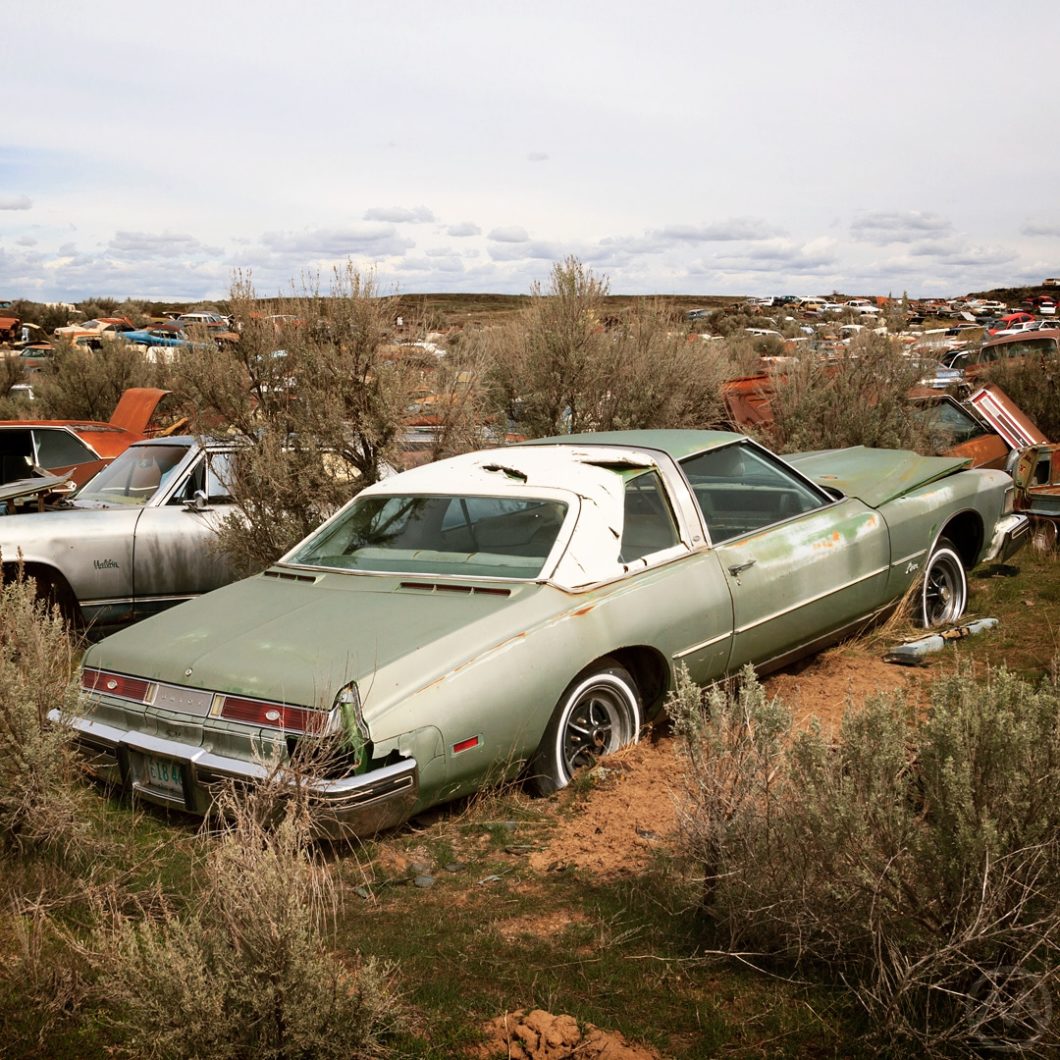The 1974-76 Buick Riviera is essentially a forgotten car today, lingering in the deep shadow left by the famous ‘71-’73 Boattail cars and built in relatively small numbers. The car actually didn’t look bad at all, but it had much less character than what went before.
The restyle was also ill-timed – the “notchback” Riv looked every bit as big and heavy as it actually was, which was not helpful after OPEC.
You might be thinking “Why restyle it at all? the boattail was awesome!”
Well, the boattail cars are beloved today but they were poor sellers when they were new, and almost nobody involved in their creation was particularly happy with the car when it started rolling off the line.
The boattail’s styling had been meant for a smaller car on the “stretch” A-body that had been so successful for Pontiac with the 1969 Grand Prix (and would be just as successful for Chevrolet on the 1970 Monte Carlo). Originally, it would be to the Buick Skylark as the Grand Prix was the LeMans, but it was a much more complicated design to tool up for.
While the Monte and Grand Prix had mostly new exteriors, they still shared glass and all of their structural parts with the regular A-cars, and the boattail styling was simply too complex to share all that much with the regular Skylark.
The E/B Boattail
The design had come from Bill Mitchell’s experimental studio and a designer named Don DaHarsh, and then moved to Buick’s own studio for finishing and productionization.
Instead of retooling for a Skylark variation, GM’s finance and engineering groups, in part led by Ed Cole, dictated that the car should ride the E-body Eldorado/Toronado platform instead.
The E cars were fairly closely related to the then-new 1971 B-bodies for cost reasons, and Buick would continue to be rear-drive and the way to make economies of scale for that was to use components of the B-body LeSabre, in particular its cowl, windshield, and door structure.
The 1971-72 Rivieras rode pretty much the same frame as the E-cars, and were officially designated “Es” but in reality the actual car was much closer to the B-body. Complicating this historically is the fact that in 1973, when the frame needed strengthening for impact bumpers, it was changed to be Riviera specific.
Buick’s studio, then led by Jerry Hirshberg who would later head Nissan Design International (NDI) reluctantly translated the car to the much larger combination of B and E-body. Nobody was particularly happy with it this way even if it’s a crowd-pleaser today.
Buick’s GM Lee Mays was not a fan of the Riviera at all and definitely not of the Boattail, but the project went ahead and reached showrooms in the late fall of 1970. Buick’s target was 50,000 cars a year, which was about what the Riviera sold in 1969 and 1969, but 1971 sales were only 33,000 cars – and almost from the start there were plans to make it “more normal.” By the time “normal” arrived Mays had departed and George Elges had replaced him.
It’s not entirely clear exactly who revised the ‘74 Riviera, but it was almost certainly done by most of the same team that brought the Boattail to life under Hirschberg’s guidance, including a designer who also later moved to Nissan with him, Allan Flowers.
Some of Flowers’ sketches from the period look very much like the ‘74 and the updated 1975 front end, which incorporated the new rectangular headlights of the era.
If there was one truly noteworthy touch on the ’74, it was the high-mounted brake lights ahead of the trunk. This unusual feature was also seen on early 1970s Oldsmobile Toronados. The lights were not as obvious as the later “Compulsory High Mounted Stop Light” that was mandated in 1986, but higher mounted brake lights did reduce accidents and they looked novel.
The 1974 Buick Riviera
The final result of the Buick team’s efforts was actually quite a clean and muscular looking car by 1974 standards but one that looked and felt way too big. Indeed, the ‘74 Riviera weighed 4,600 lbs and was 218 inches long, powered only by a gigantic 455 V8. Standard stuff for the times, but the times had suddenly changed.
Other big luxury coupes managed to weather OPEC down but not out, particularly Lincoln’s MkIV, but the Riviera did not. Sales dropped from an not great 34,000 in 1973 to a dismal 20,000 in 1974 – sinking even further in 1975 to just 17,000 cars. The Riviera didn’t really recover until 1979’s transition to the front-drive E-body.
Under the skin, the ‘74-’76 Riv was pretty much the same as it had been before, it just looked more conventional now and perhaps a bit too close to the related b-body LeSabre 2-doors (the sporty version of the Buick B, the Centurion, was dropped after 1973).
That said, it still featured plenty of luxury touches both visual and functional. A handling package with beefy stabilizer bars made it one of the better handling big cars of the time, but nobody mistook it for a sports car.
1974 even still had a GS Stage 1 variation available, though power it was relatively sedate at an emissions-strangled 245 hp (torque remained aplenty). In the aftermath of OPEC a 9 mpg Stage 1 must have been a really risky buy, so only about 1,700 people opted for it.
The Riviera was downsized along with the B-bodies in 1977 and did two years on that platform before migrating to the E. Hirshberg and Flowers departed GM for Nissan in 1980.
The 1974 Buick Riviera above was photographed at L&L Classic Automotive.

